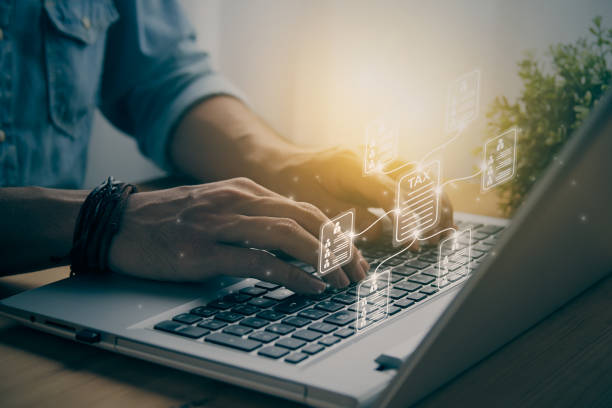What is On-Page SEO and Why is it Important?
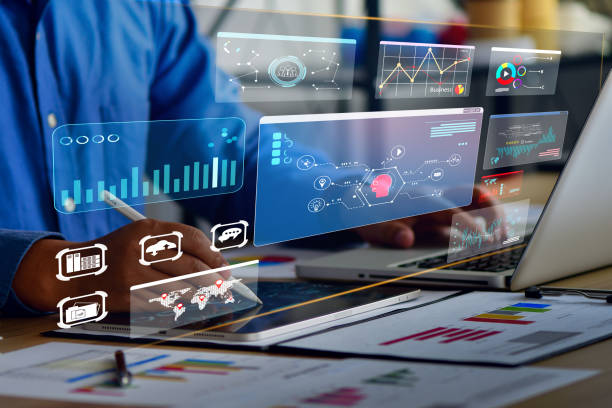
On-page SEO, also known as #website_content_optimization, refers to a set of techniques and actions performed within your website to improve your site’s ranking in Google search results and other search engines.
These actions include optimizing content, site structure, HTML tags, and other internal elements of the website.
The importance of on-page SEO lies in helping search engines better understand your site’s content and display it to users searching for relevant information.
On-page SEO is the foundation of a successful SEO strategy, and without it, efforts to achieve high rankings in search results will be futile.
In fact, on-page SEO ensures that your website is optimized for search engines and users, which leads to increased traffic, improved conversion rates, and ultimately, the growth of your business.
For example, using relevant keywords in the page title, meta descriptions, and main content is an important step in on-page SEO.
Also, creating a strong internal linking structure and optimizing images are other important actions in this area.
In short, on-page SEO helps you have more control over your site’s ranking and increases your chances of attracting organic traffic by optimizing various aspects of the website.
For more information on SEO and website optimization, you can visit this page.
Did you know that a poorly designed online store can drive away up to 70% of your potential customers? Rasaweb transforms your sales with professional and user-friendly e-commerce website designs.
✅ Significant increase in sales and revenue
✅ Full optimization for search engines and mobile
⚡ [Get a free consultation from Rasaweb]
Keyword Research and Its Role in On-Page SEO

Keyword research is the process of identifying the words and phrases that users use to search for information in search engines.
These keywords should be relevant to the topic and content of your website.
Choosing the right keywords is one of the most important steps in on-page SEO, as these words help search engines understand what your website is about and display it to users who are looking for related information.
To perform keyword research, you can use various tools such as Google Keyword Planner, Ahrefs, and Semrush.
These tools help you find search volume, competition levels, and related keywords.
After identifying the appropriate keywords, you should use them strategically in your page title, meta description, URL, headings, and body content.
Remember that overusing keywords (keyword stuffing) can negatively impact your site’s ranking, so you should ensure natural and reasonable use of them.
In addition, try to use long-tail keywords as well, as these words usually have less competition and can attract more targeted traffic to your site.
On-page SEO requires a correct understanding of audience needs and smart use of keywords.
Mobile optimization is very important in SEO. You can find more information in this link.
Optimizing Page Title and Meta Descriptions

The page title and meta descriptions are two important elements in HTML that are displayed in search results and play an important role in attracting users to your website.
The page title is the main title of your page that is displayed in the browser bar and search results.
Meta descriptions are a summary of your page’s content that appears below the page title in search results.
Both elements should be attractive, relevant, and contain keywords to entice users to click on your link.
The page title length should be between 50 and 60 characters, and the meta description length should be between 150 and 160 characters.
Also, make sure that both elements are unique and different from other pages on your website.
Failure to optimize the page title and meta descriptions can lead to a decrease in click-through rate (CTR) and, consequently, a decrease in your site’s ranking in search results.
In this section, two tables are provided to show the best practices for writing page titles and meta descriptions.
| Page Title Elements | Description |
|---|---|
| Title Length | Between 50 and 60 characters |
| Includes Keyword | Yes, at the beginning of the title |
| Attractive and Relevant | Yes, to attract clicks |
| Unique | Yes, different for each page |
| Meta Description Elements | Description |
|---|---|
| Description Length | Between 150 and 160 characters |
| Includes Keyword | Yes, naturally |
| Content Summary | Yes, a brief explanation of the page |
| Encourage Clicks | Yes, by creating motivation |
Optimizing the link structure is also important in SEO. Learn more about link structure.
Optimizing URL and Link Structure
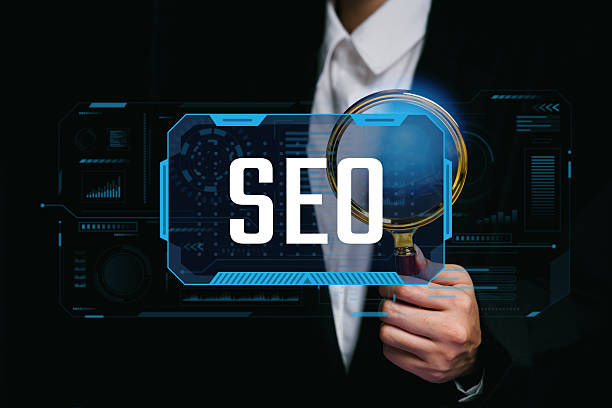
The URL, or web address, is the unique address of each page of your website.
Optimizing the URL can help search engines better understand the topic of the page and display it to users who are looking for related information.
An optimized URL should be short, descriptive, and contain keywords.
Also, you should avoid using unnecessary characters and numbers in your URL.
The link structure is how your website’s pages are organized, which should be logical, hierarchical, and easy to navigate.
A good link structure helps users and search engines easily access different pages of your website.
Also, you should avoid creating broken links and duplicate links.
Using relevant internal links can help improve your site’s ranking in search results.
Related internal links help search engines understand the relationship between different pages of your website and give more credibility to your important pages.
On-page SEO with appropriate URL and link structure helps improve user experience and increase site ranking.
Optimizing the link structure is also important in SEO. Learn more about link structure.
Dissatisfied with the low conversion rate of visitors to customers on your online store?
Solve this problem forever with a professional e-commerce website design by Rasaweb!
✅ Increase the conversion rate of visitor to customer
✅ Create a great user experience and build customer trust
⚡ Get a free consultation
Content Optimization and Keyword Usage

Content is the heart of your website and plays an important role in attracting and retaining users.
High-quality, valuable, and relevant content can help improve your site’s ranking in search results.
To optimize content, you should use relevant keywords naturally and reasonably in the title, headings, body, and images of your content.
Also, you should update your content regularly and avoid creating duplicate content.
Your content should be written for users, not just for search engines.
Try to make your content engaging, readable, and understandable.
Using images, videos, and other multimedia elements can help improve the user experience and increase user engagement with your content.
Also, you should ensure compliance with correct writing and spelling principles.
On-page SEO requires producing quality content and optimizing it for search engines and users.
For more information on SEO and website optimization, you can visit this page.
Image Optimization and Alt Tags

Images play an important role in the attractiveness and beauty of your website.
However, large and unoptimized images can slow down page loading speed and negatively impact your site’s ranking in search results.
To optimize images, you should reduce their size, choose the appropriate format (such as JPEG for color images and PNG for images with transparency), and use a descriptive and keyword-rich file name.
Also, you should use Alt tags to describe your images.
The Alt tag is the text that is displayed if the image fails to load and helps search engines understand the topic of the image.
The Alt tag should be short, descriptive, and contain keywords.
Failure to optimize images can lead to slower page loading speeds and lost SEO opportunities.
On-page SEO with optimized images and appropriate Alt tags helps improve user experience and increase site ranking.
With correct on-page SEO, you can achieve a good ranking.
On-page SEO requires producing quality content and optimizing it for search engines and users.
Optimizing Page Loading Speed
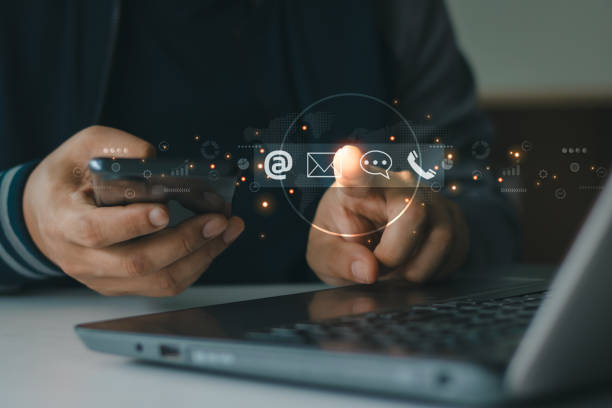
Page loading speed is one of the important factors in ranking sites in search results.
Users expect web pages to load quickly, and delays in page loading can lead to an increase in bounce rate and a decrease in your site’s ranking.
To optimize page loading speed, you can use various methods such as compressing images, enabling browser caching, reducing the size of CSS and JavaScript files, using a CDN (Content Delivery Network), and choosing a quality hosting.
Also, you can use various tools such as Google PageSpeed Insights and GTmetrix to analyze your page loading speed and identify and fix existing problems.
Optimizing page loading speed, in addition to improving user experience, can also help increase your site’s ranking in search results.
On-page SEO with a focus on speed helps attract and retain users.
In this section, a table is provided to show the impact of different site elements on loading speed.
| Element | Impact on Loading Speed |
|---|---|
| Unoptimized Images | Significant Increase in Loading Time |
| Large CSS and JavaScript Files | Reduced Loading Speed |
| Inappropriate Hosting | Delay in Server Response |
| Not Using Browser Cache | Reloading Resources on Every Visit |
Mobile optimization is very important in SEO. You can find more information in this link.
Responsive and Mobile-Friendly Optimization

Today, many users use mobile devices to search for information on the internet.
Therefore, your website should be responsive and mobile-friendly to display correctly on different devices.
A responsive website automatically adjusts its size and layout based on the screen size of the user’s device.
A mobile-friendly website has a simple and easy-to-navigate design and allows users to easily access the content they want.
Google also prioritizes mobile-friendly websites and displays them higher in search results.
To optimize your website for mobile, you can use various tools such as the Google Mobile-Friendly Test.
Failure to optimize the website for mobile can lead to loss of traffic and decrease in your site’s ranking in search results.
On-page SEO with responsive design helps provide an optimal user experience on different devices.
With correct on-page SEO, you can achieve a good ranking.
For more information on SEO and website optimization, you can visit this page.
Falling behind in competition with large online stores?
Rasaweb brings your business online and increases your market share with professional e-commerce website design!
✅ Increased brand credibility and customer trust
✅ Easy shopping experience leads to more sales
⚡ Take action now to receive a free website design consultation!
The Importance of Internal Linking in On-Page SEO
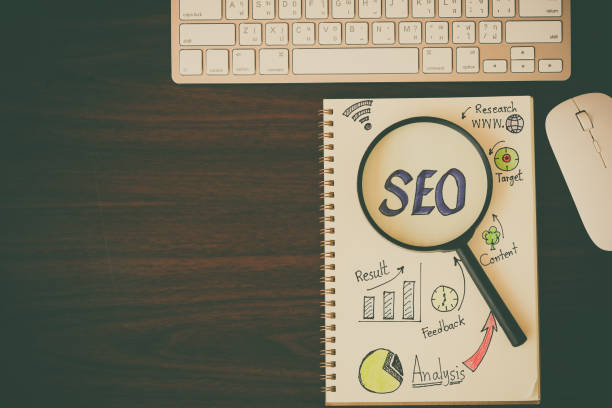
Internal linking is the process of creating links between different pages of your website.
Internal links help search engines understand the structure of your website and give more credibility to your important pages.
Also, internal links help users easily access pages related to their topic of interest.
For internal linking, you should use descriptive and relevant anchor text and avoid creating broken links and duplicate links.
Also, you should avoid linking to low-value and low-quality pages.
Internal linking is one of the most important factors in on-page SEO and can help improve your site’s ranking in search results.
On-page SEO with targeted linking helps guide users and search engines on the website.
Optimizing the link structure is also important in SEO. Learn more about link structure.
Reviewing and Analyzing On-Page SEO and Continuous Improvement

On-page SEO is an ongoing process and requires continuous review and analysis.
After taking on-page SEO measures, you should regularly review your website’s performance and identify its strengths and weaknesses.
To do this, you can use various tools such as Google Analytics and Google Search Console.
These tools help you track website traffic, bounce rate, keyword rankings, and other important metrics.
Based on the analysis results, you should improve your on-page SEO strategy and take the necessary steps to address existing problems.
For example, if you notice a high bounce rate, you should improve your content and improve the user experience.
On-page SEO requires patience and results may take time.
But with effort and perseverance, you can improve your site’s ranking in search results and attract more organic traffic.
On-page SEO is a dynamic process that requires constant updates with changes to search engine algorithms.
Optimizing and doing on-page SEO for your site is important.
On-page SEO requires producing quality content and optimizing it for search engines and users.
Frequently Asked Questions
| Question | Answer |
|---|---|
| What is On-Page SEO? | Refers to a set of actions performed within a website to improve rankings in search engines. |
| Why is On-Page SEO important? | Because it helps search engines better understand the content and structure of your site and improves the user experience. |
| What are the most important elements of On-Page SEO? | Title and meta descriptions, keywords, URL structure, quality content, image optimization, internal linking, and site speed. |
| How to optimize the Title Tag and Meta Description? | The title should include the main keyword and be attractive, and the meta description should be an engaging summary of the content with related keywords. |
| What is the role of keywords in On-Page SEO? | Keywords help search engines understand what the page’s content is about and should be used naturally and intelligently in the text. |
| How is image optimization done for On-Page SEO? | By compressing the size, using a descriptive file name, and filling in the Alt tag with related descriptions and keywords. |
| What is Internal Linking and what is its purpose? | Connecting different pages of the site to each other. This helps distribute page authority and improve search engine crawling. |
| What is the importance of site loading speed in On-Page SEO? | High speed improves the user experience and is one of the important ranking factors for search engines like Google. |
| What impact does the site’s Mobile-Friendliness have on On-Page SEO? | Given the increase in mobile users, being responsive is essential to provide a suitable user experience on all devices and for Google’s mobile-first indexing. |
| What are the important content-related factors in On-Page SEO? | Originality, quality, comprehensiveness, readability, proper use of headings (H1, H2,…) and regular content updates. |
And other services of Rasa Web Advertising Agency in the field of advertising
Smart Google Ads: A creative platform for improving customer behavior analysis with intelligent data analysis.
Smart Brand Identity: An exclusive service for increasing click-through rates based on attractive user interface design.
Smart SEO: A fast and efficient solution for online growth with a focus on precise audience targeting.
Smart Google Ads: Designed for businesses looking to increase click-through rates by optimizing key pages.
Smart Sales Automation: Professional optimization to increase site visits by customizing the user experience.
And over a hundred other services in the field of internet advertising, advertising consulting, and organizational solutions
Internet Advertising | Advertising Strategy | Advertorial
Resources
What is SEO Guide?
,What is Inbound Marketing?
,On-Page SEO Factors
,Ahrefs On-Page SEO Guide
? Are you ready to jumpstart your business in the digital space? Offering a wide range of professional services, including e-commerce website design and comprehensive SEO strategies, Rasaweb Digital Marketing Agency helps you achieve your online marketing goals and have a strong and successful presence on the Internet.
📍 Tehran, Mirdamad Street, next to the Central Bank, South Kazerun Alley, Ramin Alley No. 6


